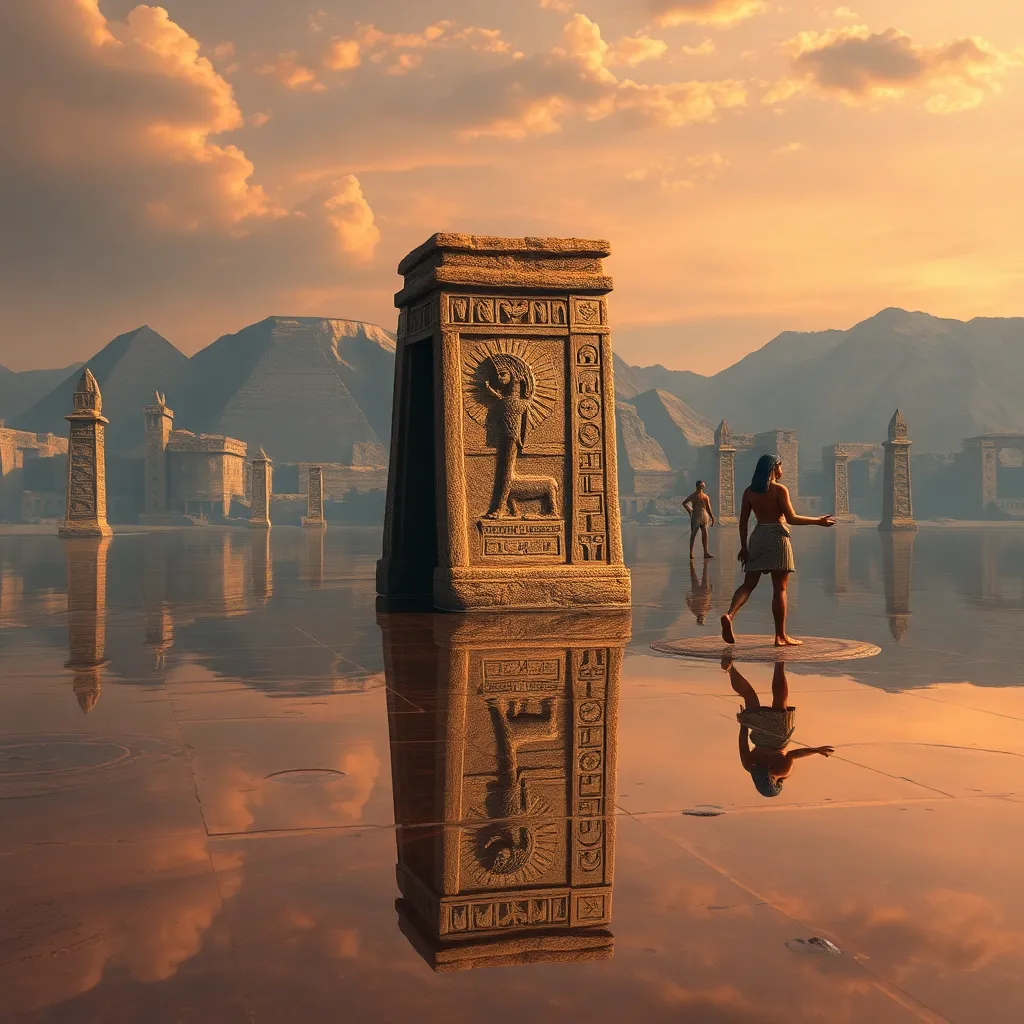The Art of Ancient Egypt: A Reflection of the Mythology
I. Introduction
Ancient Egyptian art is a remarkable reflection of one of the world’s oldest civilizations, characterized by its unique styles and forms that have captivated audiences for centuries. From intricate hieroglyphs to monumental structures, the art of Ancient Egypt serves not only as a visual feast but also as a window into the profound mythology that permeated their culture.
Mythology played a crucial role in shaping artistic expression in Ancient Egypt, influencing everything from the themes depicted in art to the materials and techniques used. This article aims to explore the intersection of art and mythology in Ancient Egypt, revealing how deeply intertwined these two elements were in the civilization’s cultural fabric.
II. The Role of Mythology in Ancient Egyptian Culture
Egyptian mythology is a rich tapestry of stories, beliefs, and deities that formed the backbone of Ancient Egyptian culture. With a pantheon of gods and goddesses, each representing different aspects of life and nature, mythology influenced various facets of daily life.
- Key Deities: Some of the most significant deities include:
- Ra: The sun god and a symbol of creation.
- Osiris: God of the afterlife, resurrection, and fertility.
- Isis: Goddess of motherhood and magic.
- Anubis: God of mummification and the afterlife.
- Impact on Society: Mythology shaped societal values, emphasizing concepts such as order (Ma’at) and the afterlife, dictating morality and ethics in daily life.
III. Iconography in Ancient Egyptian Art
Iconography is a vital aspect of Ancient Egyptian art, filled with common symbols and motifs that convey complex ideas and narratives. The representation of gods and goddesses, for instance, was not merely decorative but served to connect the divine with the earthly realm.
- Common Symbols:
- Ankh: Symbol of life.
- Eye of Horus: Symbol of protection and royal power.
- Sistrum: Musical instrument associated with the goddess Hathor.
- Hieroglyphs: Ancient Egyptians employed hieroglyphs not just as a writing system but as a means to convey mythological narratives, embedding stories within the art itself.
IV. Architecture as a Canvas for Mythology
Architecture in Ancient Egypt served as a grand canvas for expressing mythological themes. The design and purpose of monumental structures were deeply rooted in their religious beliefs.
- Temples: Temples were built as places for the gods and were often intricately decorated with scenes from mythology. Each temple was dedicated to a specific deity and included shrines, sculptures, and reliefs depicting their myths.
- Pyramids: Serving as tombs for pharaohs, pyramids symbolized the journey to the afterlife, representing the rays of the sun and the divine connection between the earth and the heavens.
- Monumental Sculptures: Massive statues of gods and pharaohs were designed to convey power and divine association, often depicting scenes from mythology to emphasize their roles as intermediaries between the gods and the people.
V. Painting and Reliefs: Telling Mythological Stories
The art of painting and relief carving in Ancient Egypt was instrumental in narrating mythological stories. Artists used various techniques and materials to create vibrant depictions of their beliefs.
- Techniques: Artists used natural pigments derived from minerals and plants to create colors that have remarkably survived through millennia.
- Famous Scenes: Tomb paintings often depicted scenes of the afterlife, including:
- The weighing of the heart, a critical moment in the afterlife journey.
- Osiris receiving the deceased in the afterlife.
- Symbolism: Color and composition played vital roles, with specific colors symbolizing different meanings—for example, green for fertility and rebirth.
VI. The Afterlife and Art: A Mythological Perspective
The Ancient Egyptians held a profound belief in the afterlife, which significantly influenced their art. This belief system was intricately tied to their mythology, leading to a rich tradition of funerary art.
- Afterlife Beliefs: The Egyptians believed in a judgment process after death, where the heart of the deceased would be weighed against the feather of Ma’at to determine their fate.
- Artistic Representations: Art depicting the journey to the afterlife was prevalent, often including:
- Scenes of the deceased in the company of gods.
- Protective deities watching over the journey.
- Funerary Art: Items such as canopic jars, sarcophagi, and decorated tomb walls were created to ensure safe passage and protection in the afterlife, reflecting the mythological beliefs surrounding death and rebirth.
VII. The Influence of Ancient Egyptian Art on Later Cultures
The artistic legacy of Ancient Egypt has influenced various cultures throughout history, leaving a lasting mark on art forms around the world.
- Legacy: Egyptian mythology and art have inspired countless artists and movements, from the Renaissance to modern art.
- Modern Interpretations: Contemporary artists often draw on ancient themes, reinterpreting mythological stories and symbols in their work.
- Continued Fascination: The allure of Egyptian art endures in contemporary society, evident in popular culture, fashion, and even architecture.
VIII. Conclusion
In summary, the relationship between art and mythology in Ancient Egypt is a profound testament to the civilization’s cultural richness. Through their art, the Egyptians conveyed intricate mythological narratives, beliefs about the afterlife, and their understanding of the divine. This artistic tradition not only reflects their values and beliefs but also continues to resonate in modern times, showcasing the enduring impact of Ancient Egyptian art and mythology.
Understanding this connection provides invaluable insights into the civilization’s worldview and highlights the universal themes of life, death, and the divine that continue to fascinate humanity today.




